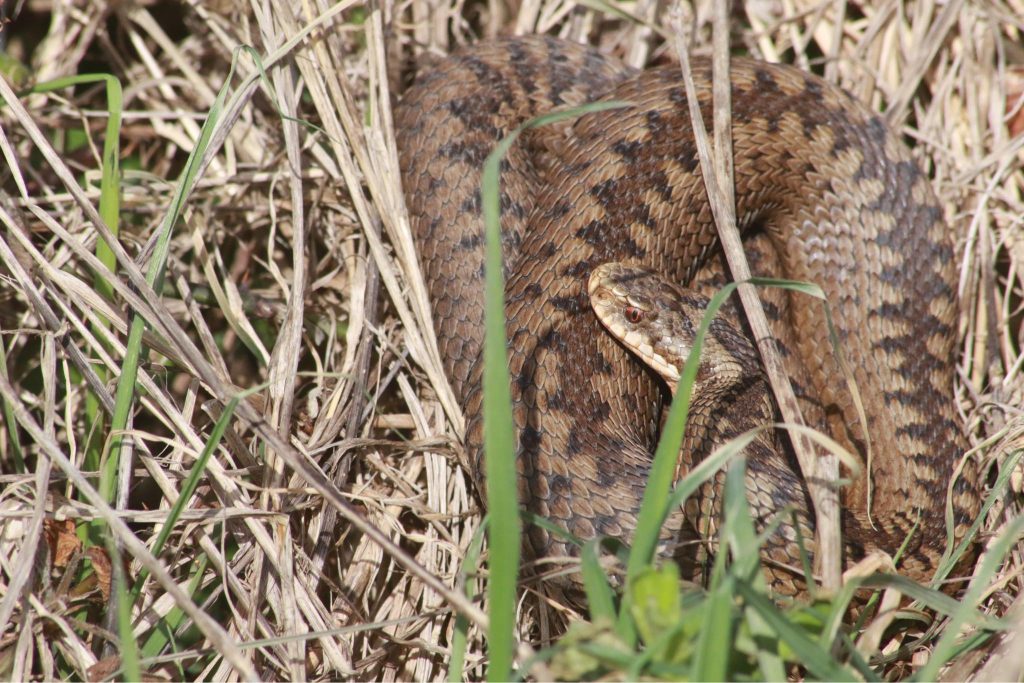In the enchanting tapestry of nature, the adder (Vipera berus) weaves its own intricate thread, embodying resilience and adaptation. As one of the few venomous snakes native to Europe, adders possess a captivating life cycle that mirrors the rhythm of their surroundings. From birth to adulthood, these serpents navigate through various stages, each imbued with its own challenges and triumphs. Delving into the life cycle of an adder unveils a mesmerising narrative of survival and symbiosis within the ecosystems they inhabit.
The life cycle of an adder commences with the enigmatic process of embryonic development. Following mating, female adders undergo gestation, typically lasting around three months. During this period, the embryos develop within the protective confines of the mother’s body. Adders are ovoviviparous, meaning the embryos hatch from eggs inside the female and emerge as fully formed neonates. This adaptation offers them a head start in the perilous world awaiting beyond the womb, equipped with the instinctual prowess necessary for survival.

(C) Sam Cridland
Upon birth, adder neonates enter the world as miniature replicas of their adult counterparts, albeit with subdued colours and delicate features. Despite their diminutive size, these hatchlings possess potent venom, an evolutionary trait essential for predation and defense. As they navigate the labyrinthine undergrowth of their habitat, adder juveniles rely on their cryptic camouflage to evade potential threats. Their early lives are fraught with peril, as they grapple with predation risks and environmental hazards while honing their hunting skills through trial and error.
As adders traverse the threshold of adolescence, they undergo a period of rapid growth and maturation. Shedding their juvenile skin several times a year, these serpents shed their physical vestiges of youth, emerging with enhanced size and vigour. During this transformative phase, adders exhibit voracious appetites, preying upon small mammals, birds, and amphibians to fuel their burgeoning metabolisms. Their encounters with prey and predators alike sculpt their instincts, refining their predatory prowess and defensive strategies.
The zenith of an adder’s life cycle manifests in the timeless ritual of reproduction. Each spring, as the thawing embrace of winter relinquishes its hold on the land, male adders engage in intricate courtship displays to woo potential mates. These courtship rituals involve a mesmerising dance of intertwining bodies and flickering tongues, culminating in the selection of suitable partners. Once mating occurs, female adders embark on the arduous journey of gestation, while males resume their solitary pursuits in search of sustenance and territory.

(C) Sam Cridland
Throughout their life cycle, adders play an indispensable role in the delicate web of ecological interactions. As apex predators, they help regulate prey populations, thereby preventing overgrazing and maintaining ecosystem balance. Furthermore, adders serve as indicators of environmental health, their presence or absence reflecting the vitality of their habitats. Interactions with other species, such as birds of prey and mammals, shape their evolutionary trajectory, driving adaptations that enhance their survival in an ever-changing landscape.

(C) Sam Cridland
The life cycle of an adder encapsulates the timeless dance of existence, characterised by adaptation, resilience, and symbiosis. From the embryonic realm to the zenith of adulthood, these serpents navigate a labyrinth of challenges and triumphs, leaving an indelible mark on the tapestry of nature. By unraveling the intricacies of their life cycle, we gain insight into the profound interconnectedness of all living beings and the enduring beauty of the natural world.
Adders will protect themselves, so please, while out walking in the countryside, especially if walking a dog, be careful.
If you like our content, join us in helping to bring reality and decency back by SUBSCRIBING to our Youtube channel: https://www.youtube.com/channel/UCQ1Ll1ylCg8U19AhNl-NoTg AND SUPPORTING US where you can: Award Winning Independent Citizen Media Needs Your Help. PLEASE SUPPORT US FOR JUST £2 A MONTH https://dorseteye.com/donate/







